11 Insteresting Facts About Italy That You Probably Do Not Know
Home to many of the world's greatest works of art, architecture and gastronomy, Italy elates, inspires and moves like no other.
Epicentre of the Roman Empire and birthplace of the Renaissance, this European virtuoso groans under the weight of its cultural cachet: it's here that you'll stand in the presence of Michelangelo's David and Sistine Chapel frescoes, Botticelli's Birth of Venus and Primavera and da Vinci's The Last Supper. In fact, Italy has more Unesco World Heritage cultural sites than any other country on Earth. Should you walk in the footsteps of ancient Romans in Pompeii, revel in Ravenna's glittering Byzantine treasures or get breathless over Giotto's revolutionary frescoes in Padua? It's a cultural conundrum as thrilling as it is overwhelming.
There are plenty of fun facts about Italy. It's one of Europe's most visited countries. The history's long. The culture's rich. And the food's delectable. But what do you actually know? Here are some interesting facts about Italy.
1. Rome is over 2,000 years old
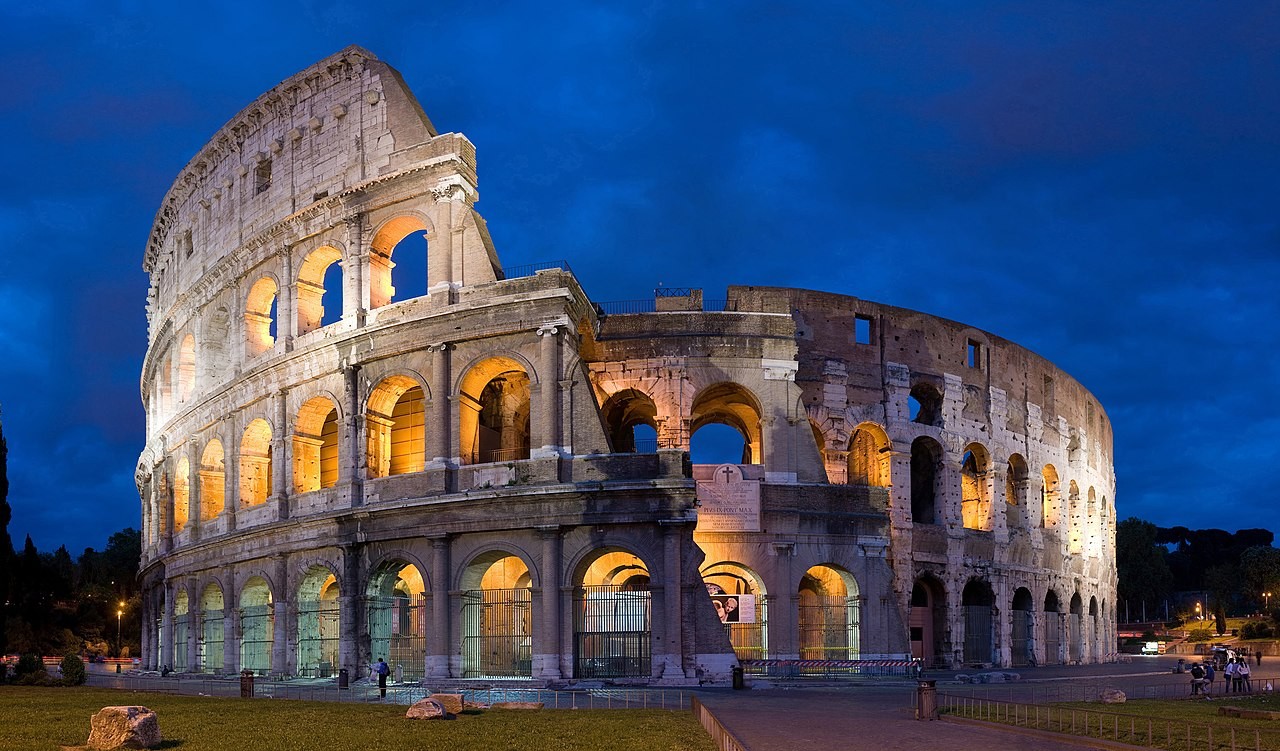 |
| Photo: Wikipedia |
In historiography, ancient Rome describes Roman civilization from the founding of the Italian city of Rome in the 8th century BC to the collapse of the Western Roman Empire in the 5th century AD, in turn encompassing the Roman Kingdom (753–509 BC), Roman Republic (509–27 BC) and Roman Empire (27 BC–476 AD) until the fall of the western empire. The civilisation began as an Italic settlement in the Italian Peninsula, traditionally dated to 753 BC, that grew into the city of Rome and which subsequently gave its name to the empire over which it ruled and to the widespread civilisation the empire developed. The civilization was led and ruled by the Romans, alternately considered an ethnic group or a nationality. The Roman Empire expanded to become one of the largest empires in the ancient world, still ruled from the city, with an estimated 50 to 90 million inhabitants (roughly 20% of the world's population at the time) and covering 5 million square kilometres (1.9 million square miles) at its height in AD 117.
The influence of ancient Rome is everywhere. Its noble ruins tell a tale of power, politics, and imperial egos; of pagan gods now forgotten; of public art on a grand scale; and of enduring engineering feats. It’s a story of colossal achievement and monumental failure.
By the year 500, the over-expanded, corrupt and exhausted Roman Empire had fallen. But the grandeur of the Roman Empire lived on in the Roman Church. Over time, Trajan's column was capped with a Christian saint, the Pantheon became a church, Emperor Hadrian's mausoleum became the Pope's fortress, and the tomb of the Apostle Peter, a man the Romans executed, was crowned by the grandest building in the city — St. Peter's Basilica.
Today visitors to Rome find fascinating layers of history and culture: early Christian, baroque, and modern. But it all sits upon a solid foundation of the ancient city which was, for many centuries, the capital of Western Civilization.
2. Italy's last king ruled for just 36 days
 |
| Photo: Wikimedia Commons |
Umberto II, (born Sept. 15, 1904, Racconigi, Italy—died March 18, 1983, Geneva, Switz.), prince of Savoy and briefly king of Italy in 1946 until he was forced to abdicate after a republican form of government was approved in a general referendum.
The son of King Victor Emmanuel III, Umberto graduated from the Royal Military Academy in Turin. He became a general in 1931 and commanded an armoured division in World War II. On Mussolini’s recommendation he was made marshal in October 1942. After the Allies took Rome, his father appointed him lieutenant general of the realm (June 2, 1944) and abdicated in his favour on May 9, 1946. Although Umberto campaigned to rally the monarchist forces, the Italian people voted for a republic. On June 14 Umberto and his male heirs were permanently banished from Italy. He took residence at Cascais, Port., under the title Count of Sarre.
3. The history of Italy’s flag
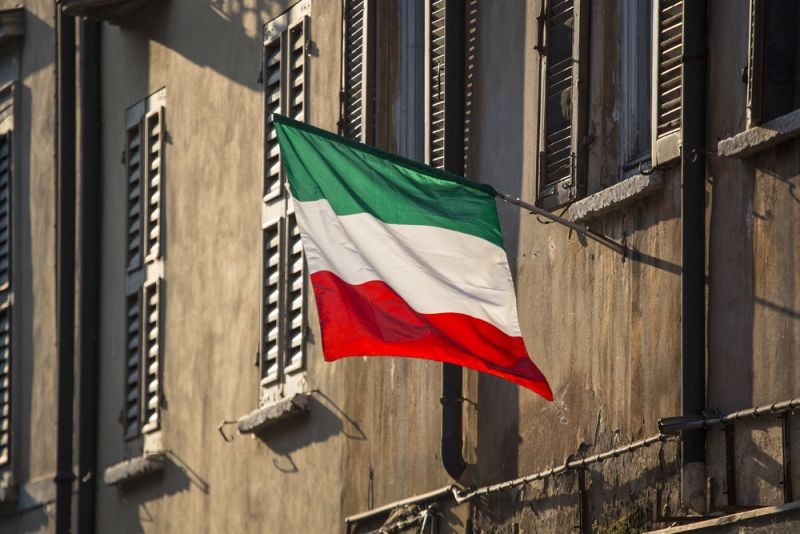 |
| Photo: Wanted in Rome |
With its trio of green, white, and red splashed across Italian restaurant signs all over the world and printed on T-shirts in tourist kiosks across the country, the Italian flag is an icon of Italy and Italian culture. But stripes of greed, white, and red weren’t always synonymous with Italy…
Originally designed under Napoleon's rule, the Italian flag was heavily influenced by another “Tricolore”-- the French flag.
Though the national Italian flag would go through many different iterations before becoming what it is today, the colors green, white, and red have been a recurring pattern throughout its history.Oddly enough, there is no clear answer to what the symbolism is behind the three colors.
There are multiple theories regarding Italy’s Tricolore. One is that the colors carry idealistic significance: green for freedom, white for faith and purity, and red for love.
Others believe that the colors have religious significance, representing the three theological virtues: Green for hope, white for faith, and red for charity.
Another theory is that the colors represent Italy’s geographical landscape and history. Green for the countryside, white for the snowy Alps, and red for the blood of the Italian people shed over the course of Italy’s history.
The Italian flag precedes Italy’s unification. Before unification in 1861, each republic in Italy had a different flag.When Napoleon began conquering Italian states after the French Revolution began in 1789, he changed the landscape of Italy, creating new republics and destroying former territories.
Following France’s call for national unity, many Italians formed political and military groups to focus efforts on creating unity within their republics.
The colors green, white, and red were originally taken from the civic militia in the Transpadane Republic, an unofficial government in Milan. Militia members wore the colors on their uniforms.In 1797, the Cispadane Republic in Modena, established by Napoleon, designed its flag with the trio of colors in horizontal stripes and a central emblem.
When the Cispadane Republic merged with nearby regions to create the new Cisalpine Republic, the stripes were rotated counterclockwise to the vertical stripes they are today, with green on the left, white in the middle, and red on the right.
However, this was not the final form of the Italian flag. Later, the short-lived region known as the Italian Republic, located in the north of Italy, also had a green, white, and red flag, but organized in a geometric pattern.
The geometric pattern mirrored patterns from Napoleonic military flags. When the Italian Republic became the Kingdom of Italy, with Napoleon as its emperor, the flag design was slightly altered, and a golden Napoleonic eagle was placed in the center.
4. Tourists throw €1,000,000 into the Trevi Fountain each year
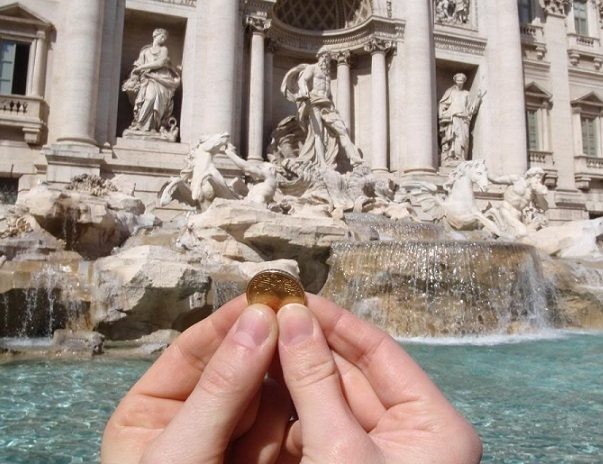 |
| Photo: eTurboNews |
The Trevi Fountain (“Fontana di Trevi” in Italian) has a history that predates the 1600s, and it’s the most well-known fountain in the world. “Trevi” is a mashup of the Italian words “tre,” meaning “three” and “vie,” meaning “roads,” because the fountain was constructed at the intersection of Rome’s then three most important thoroughfares.
According to the legend of Rome’s most famous fountain, there are three key reasons for tossing coins into the Trevi. The first and most well-known reason is based on local lore that states doing so will bring you back to Rome again, someday. But the next two reasons are lesser-known: to find love or romance while in Rome, and to happily marry there. Of course, each wish requires its own coin. So, if you’re a believer of the lore, to find romance, you’ll need two coins, and to marry an Italian in Rome after courting, you’ll need a third coin. Regardless of the gender of the person tossing the coins, these three assurances are to be virtually guaranteed—but only if one knows exactly how to toss a coin into the Trevi to make it so.
While there are surely lovers of Italy and lovers in general who will swear their wishes came true because of the coins they tossed into the Trevi Fountain, there’s no denying how much revenue from coin tosses have helped the city of Rome. An estimated 3,000 euros fly into the Trevi each day—as of this writing, that’s about $3,600 in U.S. dollars.
The 85-foot-tall, 65-foot-wide Trevi was Bernini’s largest undertaking ever, and as such a monumental attraction to tourists and natives alike, the world-renowned Italian fountain takes in approximately 1,250,000 euros annually (about $1.5 million U.S. dollars). While these large sums have attracted the eye of thieves throughout the ages, attempts at stealing from the Trevi have almost always been thwarted.
As travelers pray for a promise to return to Rome someday, the city of Rome uses the money gathered at the Trevi to pay for the food and upkeep of a market for the area’s poorest inhabitants.
5. 13 of Shakespeare's 38 plays are set in Italy
 |
| Photo: Getty Images |
William Shakespeare is widely regarded as one of the greatest playwrights of all time. It is not clear if Shakespeare ever visited Italy during his lifetime however, many of his plays are based around locations in Italy. It’s interesting, then, that nearly a third of his plays are set on the boot-shaped peninsula when he never visited Italy! He clearly had a fascination with this alluring country, and who could blame him? Italy truly is a magical place with scenery, cities and culture that are second to none.
Save for an obsession with cups of tea and apologising, nothing defines English culture more than William Shakespeare. Yet truth be told, the Bard had split loyalties. While many of his 38 plays were set in ‘this sceptred isle’ of Britain, 13 of them were based or part-based in the sunnier climes of Italy.
From the lovelorn streets of Romeo and Juliet’s Verona and Julius Caesar’s murderous machinations in Rome, to the frothy mix of sex, money and intrigue in Othello’s Venice, Shakespeare’s fascination with Italy is a constant undercurrent of his work. His Italian settings are so crucial to his plots that they have become characters in their own right – and his influence can be felt in Italy today.
6. Italy is home to Europe’s only three active volcanoes
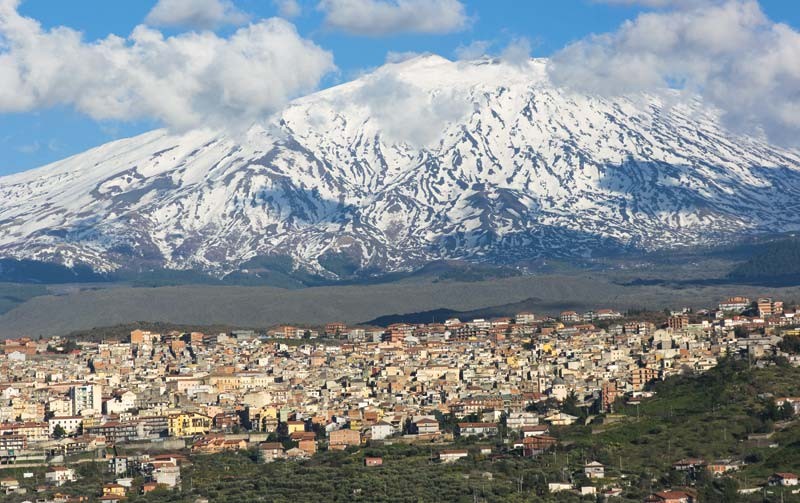 |
| Mount Etna. Photo: Britannica |
Most people don’t think of volcanoes when they think of Italy, but believe it or not, Italy is the only European country with active volcanoes! With over twelve volcanoes, it’s home to some of the most dangerous in the entire world. The three main active volcanoes in Italy are Etna, Stromboli and Vesuvius.
Mount Etna stands at 10,900 feet in elevation and is the highest active volcano in Europe. This mountain is located on the east coast of Sicily, Italy, between the cities of Messina and Catania. Not only is this volcano the largest in Europe but it’s also the most active. It’s last major eruption was in 1928 although there have been many minor ones since then. The most recent was in 2012. This unique destination is excellent for hikers who want to visit the active craters at the top.
Also located in Sicily, is the island of Stromboli. The population is right around 1,000 people. Stromboli is one of the most active volcanoes on earth and has been erupting continuously since 1932. It’s made up of a small group of islands that were formed by volcanic activity. This activity happened over a period of 250,000 years. There were eight islands that formed and two of them are considered to be active volcanoes. One of the best parts about Stromboli is the lava spurts that occur. The romans refer to it as the “Lighthouse of the Mediterranean” since you can watch lava erupt out from a safe distance.
This is by far one of Italy’s most popular mountains. It’s located on the bay on Naples in the Campania region of Italy on the west coast. Standing at 4,203 feet tall, Mount Vesuvius is considered to be one of the most dangerous in the world and has a population of 3,000,000 people living nearby. It’s responsible for burying the ancient cities of Herculaneum and Pompeii in 79AD. The city was buried in about 25 hours by volcanic ash. What makes this mountain unique is that it’s the only active volcano on European mainland, the others are on islands. To access Mount Vesuvius you must take a bus to the top of the mountain and it’s about a 25-30 minute walk to the top of the craters. This extremely popular destination brings in tons of tourists each year and something you shouldn’t miss out on.
7. The Vatican City is the world's smallest country
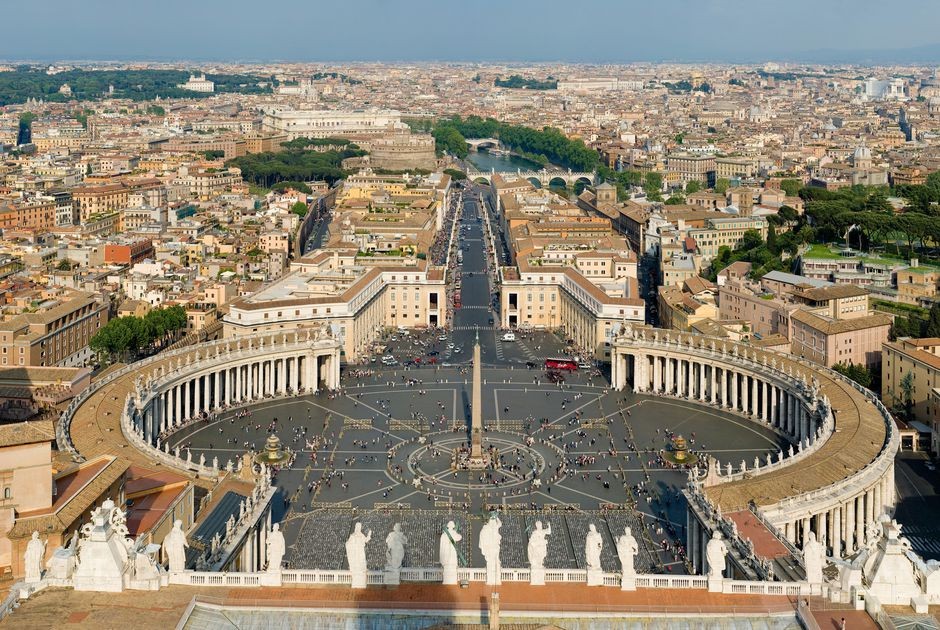 |
| Photo: Getty Images |
Based on landmass, Vatican City is the smallest country in the world, measuring just 0.2 square miles, almost 120 times smaller than the island of Manhattan. Situated on the western bank of the Tiber River, Vatican City’s 2-mile border is landlocked by Italy. The official seat of the pope of the Catholic Church since 1377, Vatican City was not declared an independent state until the Lateran Treaty of 1929. After years of power struggles between popes and the political leaders of Italy over who could claim supreme authority in the region, Benito Mussolini and Pope Pius XI agreed to the Lateran Pacts on February 11, 1929, which created the independent state of Vatican City for the Catholic Church in exchange for the pope’s recognition of the Kingdom of Italy. Today, nearly 75 percent of the Vatican’s citizens are members of the clergy.
In comparing countries by population, however, Vatican City loses out to the Pitcairn Islands for the title of smallest country. Compared to the 800-850 residents who live in Vatican City, the population of the Pitcairn Islands has fluctuated between 40 and 60 inhabitants over recent years. This British territory, located in the Pacific Ocean halfway between Peru and New Zealand, is composed of four islands, but Pitcairn is the only one that is inhabited. Pitcairn’s tiny population is also noteworthy due to its peoples’ heritage: They are descended from Tahitians and the mutineers on the Bounty. Fletcher Christian and eight other mutineers fled to Tahiti after their revolt at sea, but when hostilities arose with their new neighbors and they began to fear arrest, they escaped to the deserted island of Pitcairn to hide from British authorities, bringing a handful of Tahitians with them. The British rediscovered the islands in 1791 during a search for the mutineers, and they were named a British colony in 1838. Though the population has swelled since then to a whopping 223 just before World War II, the current population stands at about 50.
8. Italy has over 1500 lakes
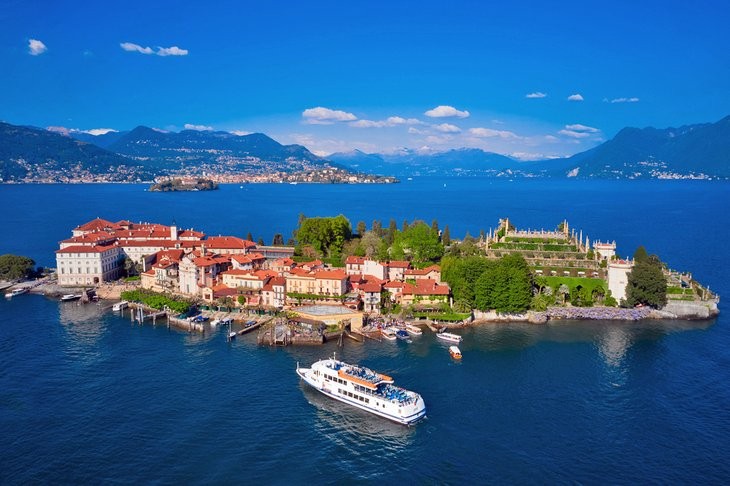 |
| Photo: PlanetWare |
Italy counts more than 1,500 lakes, but most of the largest are in the north, where the Alps form a mountainous boundary with countries farther north. Three of the lakes – Garda, Maggiore and Como – rank as Italy’s largest, while the fourth- and fifth-ranked lakes – Trasimeno and Bolsena – lie farther south.
Other lakes, such as Bolsena and Albano, in Lazio, occupy the craters of extinct volcanoes. There are also coastal lagoons, such as Lakes Lesina and Varano, in Puglia, and lakes resulting from prehistoric faulting, such as Lake Alleghe, near Belluno. The best-known, largest, and most important of the Italian lakes, however, are those cut into valleys of the Alpine foothills by Quaternary glaciers. These, listed in order of size, are Lakes Garda, Maggiore, Como, Iseo, and Lugano. They have a semi-Mediterranean climate and are surrounded by groves of olive and citrus trees. Italy also has considerable areas in which, as a result of porous rock, the water systems run underground, forming subterranean streams, sinkholes, and lakes. These are often associated with caves, the most famous of which are those of Castellana, in Puglia.
9. Italy's highest mountain is Mont Blanc
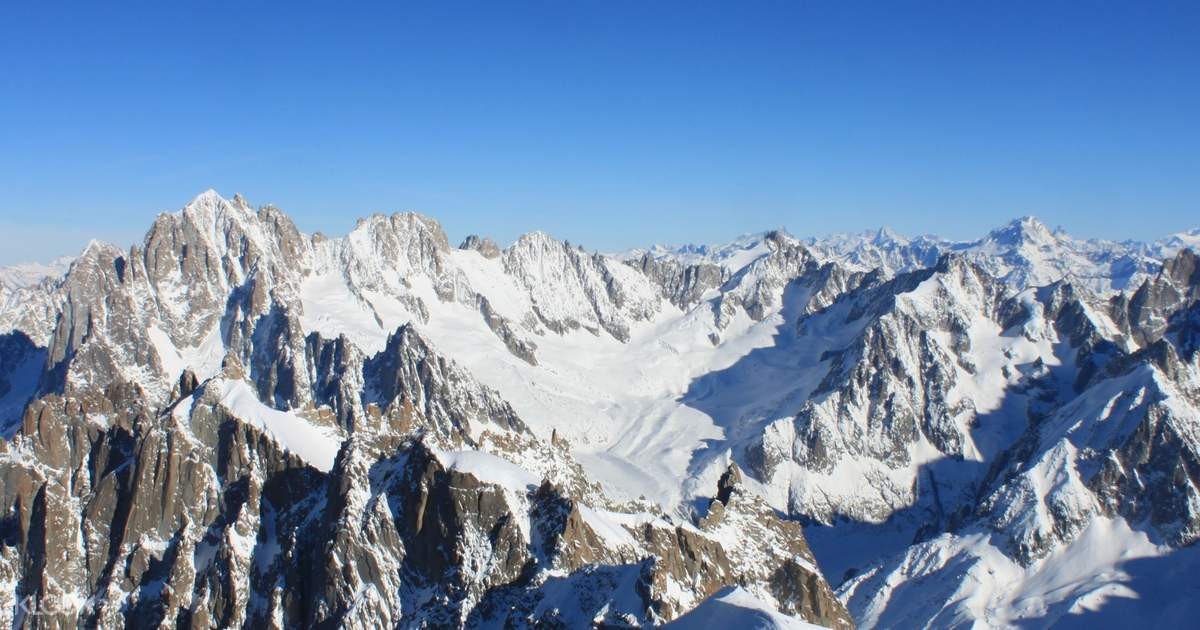 |
| Photo: Klook |
Mont Blanc is the highest mountain in the Alps and Western Europe, rising 4,807.81 m (15,774 ft) above sea level. It is the second-most prominent mountain in Europe, after Mount Elbrus, and it is the eleventh most prominent mountain summit in the world. The mountain stands between the regions of Aosta Valley, Italy, and Savoie and Haute-Savoie, France. It gives its name to the Mont Blanc massif, which itself forms part of a larger range referred to as the Graian Alps. The location of the summit of Mont Blanc is on the watershed line between the valleys of Ferret and Veny in Italy and the valleys of Montjoie, and Arve in France, on the border between the two countries. Ownership of the summit area has long been a subject of historical dispute between the two countries.
The Mont Blanc massif is popular for outdoor activities like hiking, climbing, trail running and winter sports like skiing, and snowboarding. The most popular climbing route to the summit of Mont Blanc is the Goûter Route, which typically takes two days.
The three towns and their communes which surround Mont Blanc are Courmayeur in Aosta Valley, Italy; and Saint-Gervais-les-Bains and Chamonix in Haute-Savoie, France. The latter town was the site of the first Winter Olympics. A cable car ascends and crosses the mountain range from Courmayeur to Chamonix, through the Col du Géant. The 11.6 km (7+1⁄4-mile) Mont Blanc Tunnel, constructed between 1957 and 1965, runs beneath the mountain and is a major trans-Alpine transport route.
10. Italy has the oldest population in Europe
The report, released for the 'International Day of Older Persons' on October 1st, revealed that 6.5 percent of Italians had already celebrated their 80th birthday when the data was collected in 2015.
Greece (6.3 percent) and Spain (5.9 percent) had the next highest proportion of people aged over 80, while Ireland and Slovakia had the lowest proportion at just 3.1 percent each.
In 2005, Italy came second in the rankings, with a score of 4.9 percent that left them trailing behind Sweden (5.4 percent). However, in the intervening ten years the figure in the Scandinavian nation has dropped to 5.1 percent, making it the only EU state to experience a decline in the proportion of over-80-year-olds.
Once you've reached 80, in Italy you can expect to live for another decade, slightly above the European average of nine years, six months. But France is the country where 80-year-olds have the longest life expectancy, at 11 years.
It's bad news for men, though, as women make up just under two thirds of the over-80's in Italy, a figure in line with the Europe-wide average.
Across the EU, there are almost 27 million over-80's, an increase of seven million compared to 2005.
11. Batteries were invented in Italy
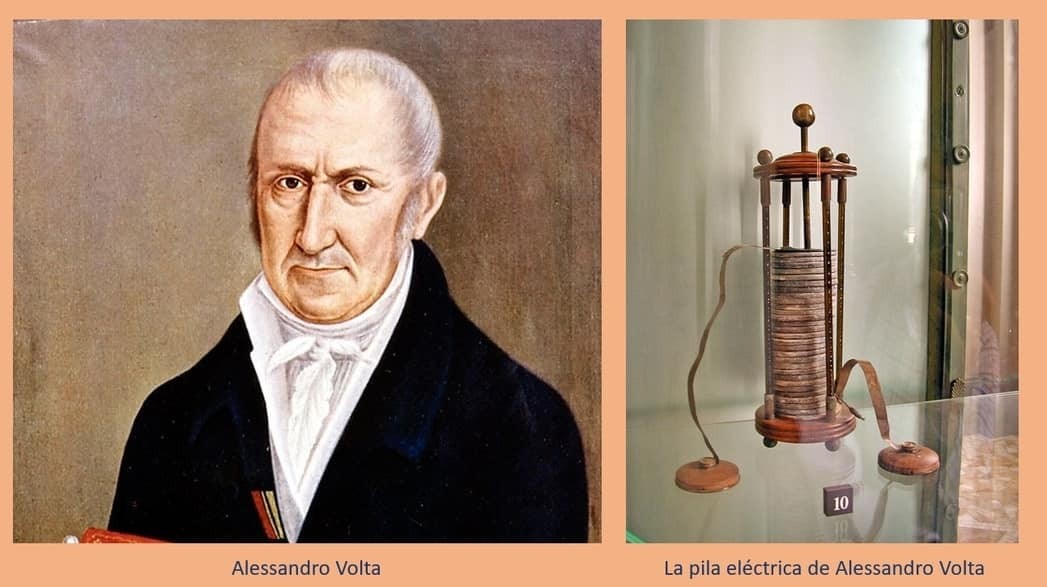 |
| Photo: Cientifiko |
Alessandro Volta, in full Conte Alessandro Giuseppe Antonio Anastasio Volta, (born February 18, 1745, Como, Lombardy [Italy]—died March 5, 1827, Como), Italian physicist whose invention of the electric battery provided the first source of continuous current.
Volta became professor of physics at the Royal School of Como in 1774. In 1775 his interest in electricity led him to improve the electrophorus, a device used to generate static electricity. He discovered and isolated methane gas in 1776. Three years later he was appointed to the chair of physics at the University of Pavia.
In 1791 Volta’s friend Luigi Galvani announced that the contact of two different metals with the leg muscles of a skinned frog resulted in the generation of an electric current that caused the leg to twitch. Galvani interpreted that as a new form of electricity found in living tissue, which he called “animal electricity.” Volta felt that the frog merely conducted a current that flowed between the two metals, which he called “metallic electricity.” He began experimenting in 1792 with metals alone. (He would detect the weak flow of electricity between disks of different metals by placing them on his tongue.) Volta found that animal tissue was not needed to produce a current. That provoked much controversy between the animal-electricity adherents and the metallic-electricity advocates, but, with his announcement of the first electric battery in 1800, victory was assured for Volta.
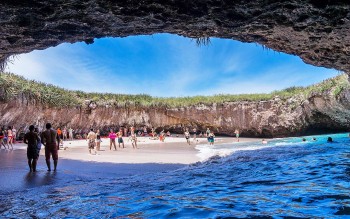 | Extraodrinary Hidden Beach in Mexico: Everything You Need To Know If you are thinking of somewhere tropical and unique to visit in your holiday, Mexico's Playa del Amor, also known as Hidden Beach, is a ... |
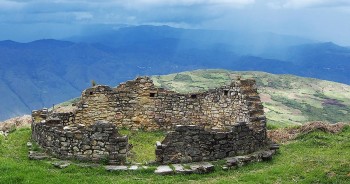 | Top 5 Most Stunning and Mysterious Places To Visit In Peru Peru is one of the most beautiful destinations for any tourists from all over the world, with stunning natural beauty, historic places and ruins of ... |
 | Visit The Home to World's 'Most Beautiful People' Venezuela is known for its many Miss Universe, Miss World and Miss International wins, along with many iconic, fascinating, and picturesque places to explore. |
Recommended
 Handbook
Handbook
Vietnam Moves Up 8 Places In World Happiness Index
 Handbook
Handbook
Travelling Vietnam Through French Artist's Children Book
 Handbook
Handbook
Vietnamese Turmeric Fish among Best Asian Dishes: TasteAtlas
 Handbook
Handbook
From Lost to Found: German Tourist Thanks Vietnamese Police for Returning His Bag
 Handbook
Handbook
Prediction and Resolution for the Disasters of Humanity
 Handbook
Handbook
16 French Films To Be Shown For Free During Tet Holiday In Vietnam
 Handbook
Handbook
Unique Cultural and Religious Activities to Welcome Year of the Snake
 Handbook
Handbook


